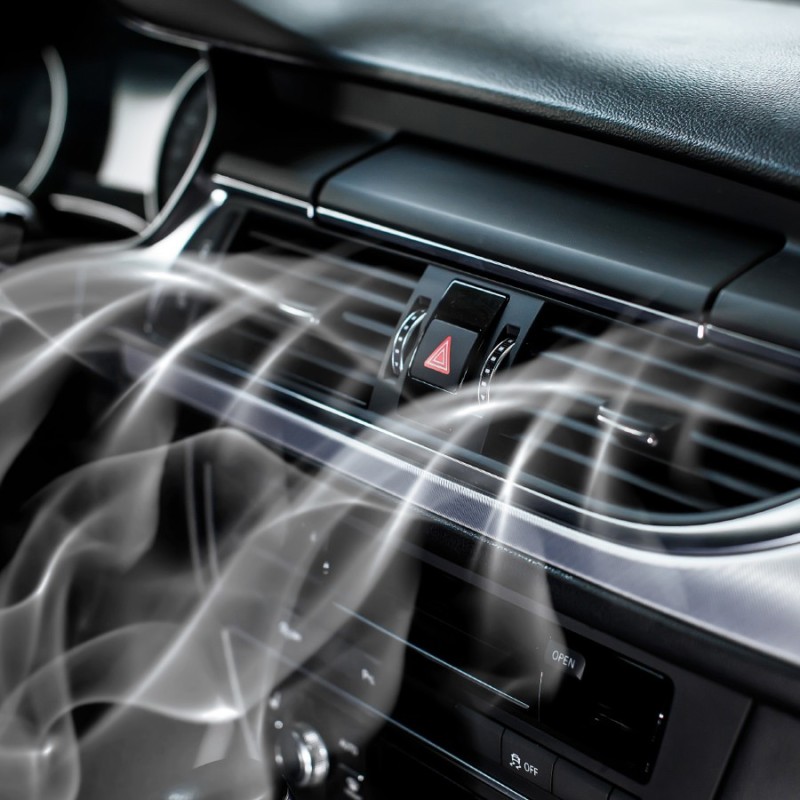Ozone treatment - servis
Car Ozone Service - Refresh Your Vehicle in Just a Few Minutes!
Your car is not just a means of transportation; it's also the space where you spend a significant amount of time. That's why it's essential to take care of its cleanliness and hygiene. Our quick car ozone service is an excellent way to eliminate unpleasant odors, bacteria, and viruses that accumulate in your vehicle.
Benefits of Car Ozone Service:
1. Removes Unpleasant Odors: Whether it's cigarette smoke, food odors, or pet smells, ozone effectively eliminates all unwanted odors, leaving fresh air behind.
2. Kills Bacteria and Viruses: Ozone is an effective method for destroying bacteria, viruses, and other microorganisms that can pose health problems.
3. Removes Allergens: If you suffer from allergies, ozone helps remove allergens such as pollen, dust, and mites that accumulate in your car.
4. Increases Car Value: A clean and fresh car becomes more attractive and can increase its value in the resale market.
Our professional team will ozone your car in just a few minutes. Our ozone-generating equipment is certified, and the procedures are conducted with the highest safety standards in mind.
Take care of your health and driving comfort. Use our car ozone service today!
Contact us to schedule an appointment and learn more about our services, including duration and prices. Your car deserves it!
Car Ozone - What You Should Know and What It Helps With
Not so long ago, ozone treatment was not available to individual customers. It was used in various industries, such as construction, hospitality, food, and healthcare, for purposes like ambulance disinfection or odor removal after fires. Today, almost anyone can afford to disinfect the interior of their car using ozone.
What is Ozone?
Ozone is a gas composed of three oxygen atoms. It occurs naturally in the environment, including in the atmosphere. However, when it comes to ozone treatment for car interiors, it is generated using specialized equipment.
Ozone Treatment - What Are the Effects?
Due to its oxidizing properties, ozone is an excellent tool for eliminating mold, fungi, mites, pollen, microorganisms, viruses, and even unpleasant odors, including paint and solvent odors. All these factors can be challenging to remove by other means, even with regular interior cleaning, and can negatively affect your well-being and health.
During the COVID-19 pandemic, ambulances used ozone treatment to disinfect the vehicles after transporting infected patients, demonstrating the effectiveness of this method.
In less critical situations, ozone treatment can help individuals with allergies and remove unwanted odors, such as cigarette smoke or pet smells. As a result, after ozone treatment, your car's interior not only becomes disinfected but also allows you to breathe truly fresh and clean air.
Is Ozone Toxic?
Ozone can be harmful to human health when present at concentrations above 0.1 ppm (or 0.2 mg/m3) and when there is prolonged exposure, exceeding 8 hours in a day or 40 hours in a week. However, you don't need to worry about entering an ozone-treated car once the process is completed.
Ozone is volatile and quickly breaks down into regular oxygen, which is not harmful to us. It is safe to enter the car shortly after ozone treatment. However, during the treatment, it's essential to avoid staying inside the vehicle, and if ozone treatment is performed in an enclosed space, proper ventilation is necessary.
How Does the Ozone Process Work?
Please note that while ozone is generally safe for us at most concentrations, it's advisable to have the process performed by a trusted service. Incorrect usage or low-quality equipment can lead to issues like discoloration of interior components.
Nevertheless, it's good to know how the process works. It usually begins with a preliminary cleaning of the car's interior, especially if you want to eliminate a lingering odor still present in the vehicle.
After the cleaning, a specialized ozone generator is placed in the car, often on the passenger seat or floor mat. In some cases, the generator remains outside the car, and ozone is introduced into the vehicle through a suitable hose or conduit, typically via a partially opened window or door.
Regardless of how ozone is introduced into the interior, once these steps are completed, the actual ozone treatment begins. The car's ventilation system is set to circulate air in a closed loop, and fans are activated to help distribute ozone throughout the interior, including the ventilation ducts.
How Long Does Ozone Treatment Take?
The best answer is "until it's effective." The duration depends on factors like the intensity of the odor you want to eliminate. However, the entire process typically takes no longer than an hour and can be effective in a significantly shorter time. An experienced service will know how to adjust the ozone generator's parameters for your specific vehicle and the issue at hand.
What Should You Do After Ozone Treatment, and How to Get Rid of the Smell?
After entering a freshly ozone-treated car, you might notice a distinct smell. Importantly, this smell is not actually the scent of ozone; rather, it's a byproduct of the process.













